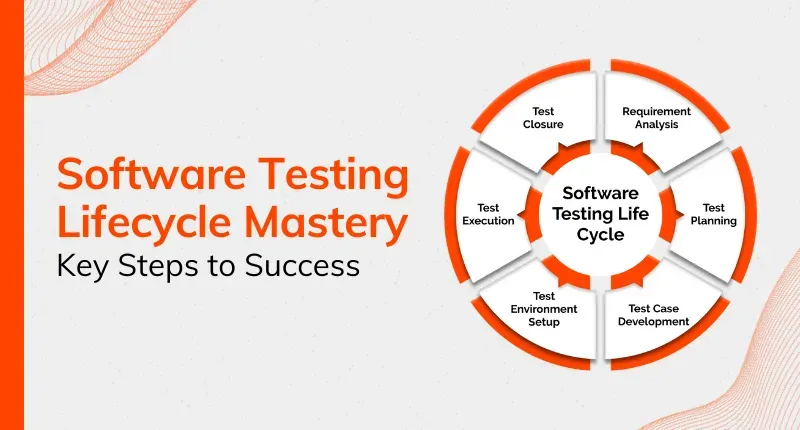Software Testing Mastery opens a practical journey into how software behaves under real-world use. This path blends manual testing with automated testing to build confidence in each release. By embracing test automation and continuous testing, teams shorten feedback loops while preserving quality. This guide outlines QA best practices. The result is a reliable, user-centered product that improves quality through disciplined exploration and validation.
Quality assurance excellence reframes the field as a holistic practice that blends verification, validation, and risk-based decision making. Teams pursue improved software quality by integrating manual checks with automated verification, treating test automation as a strategic capability. A robust QA program emphasizes continuous testing, reliable metrics, and governance that guides what to test and when. Using a layered approach—unit, integration, and end-to-end verification—helps deliver dependable software at speed. In short, the journey centers on quality engineering practices that align with user needs and business goals, not just scripted checks.
Software Testing Mastery: Harmonizing Manual Testing and Test Automation
Software Testing Mastery begins with curiosity about how users experience software. Manual testing lets teams feel the product as end users would, catching usability issues, exploratory bugs, and edge-case behavior that scripted checks can miss, while providing a human context for QA best practices and quality goals.
Moving toward automated testing doesn’t erase the value of human insight; it augments it. By prioritizing high-impact areas, selecting the right test automation tools, and writing maintainable, data-driven tests, teams accelerate feedback, reinforce regression coverage, and enable continuous testing within CI/CD pipelines.
To sustain Software Testing Mastery, invest in modular test architectures, clear naming, and robust selectors; separate test data from scripts; and build a culture of learning, collaboration, and measurement that keeps quality aligned with business goals.
Practical Roadmap for Sustained Test Automation and Continuous Testing
Creating a durable practical roadmap starts with a scalable automation layer that covers unit tests, integration tests, and end-to-end UI tests. Embrace a modular framework, reusable components like page objects, and data-driven scripts to support evolving features while following the Test Automation Pyramid for balanced coverage.
Integrate testing into the CI/CD lifecycle: run tests on every pull request, enable parallel execution, and use environment virtualization to reduce flaky results. Continuous testing becomes a fast feedback loop that helps developers ship with confidence while adhering to QA best practices.
Measure progress with actionable metrics—automation ROI, test suite stability, time-to-feedback, and coverage where it adds value—and use dashboards to drive improvements without slowing velocity. This disciplined approach ensures sustainable progress toward higher software quality.
Frequently Asked Questions
How does Software Testing Mastery blend manual testing with automated testing to improve software quality?
Software Testing Mastery blends manual testing and automated testing to maximize quality. Manual testing provides exploratory insight, usability feedback, and checks for edge cases that automated checks can miss, while automated testing delivers fast, repeatable regression checks and earlier feedback in CI/CD. By following QA best practices and embracing continuous testing, teams build a sustainable practice where test automation scales coverage and manual testing preserves discovery power.
What practical steps does Software Testing Mastery recommend to transition from manual testing to automated testing while maintaining QA best practices?
Start with a clear goal and a minimal viable automation layer, selecting tools aligned with your tech stack. Design maintainable tests with data-driven inputs, modular components, and reusable utilities, then integrate automated tests into CI/CD for continuous testing. Invest in QA best practices such as clear acceptance criteria, code reviews for automation scripts, and ongoing coaching; monitor metrics like failure rate and test efficiency to guide improvements.
| Topic | Key Points |
|---|---|
| Introduction | Software Testing Mastery blends manual and automated testing to deliver reliable software; emphasizes continuous testing for fast, high-quality delivery. |
| Manual Testing and Why It Still Matters | Provides end-user perspective, uncovers usability issues, exploratory bugs, and edge cases; valuable for look/feel and accessibility; but is time-consuming, error-prone, and hard to scale. |
| From Manual to Automated Testing: Why Transition | Augment, not replace; automation offers speed, repeatability, and immediate feedback; excels at regression, data-driven scenarios, API/UI flows at scale; requires planning, right tools, maintainable tests, and reflecting real user behavior. |
| Key Components of a Strong Test Automation Strategy | Assess risk, define test design principles, and build scalable architecture; map features to test types (unit, integration, end-to-end); follow the Test Automation Pyramid/ Diamond, with unit as foundation, fewer flaky UI tests, and a middle-layer of integration tests. |
| Selecting the right tools | Selenium, Cypress, Playwright for UI; JUnit/TestNG for Java; API tools like Postman, REST-assured, Karate; choose based on tech stack and maintenance; start simple; build modular, reusable components (page objects, data-driven scripts, helpers). |
| Designing maintainable automated tests | Deterministic tests with descriptive names; avoid hard-coded data; keep tests isolated; use data-driven testing; implement retry logic; separate data from scripts; enable reusability, easier debugging, faster onboarding. |
| The Human Side: QA Best Practices and Team Readiness | Cultivate a shared quality culture with clear goals and product alignment; write test plans with user stories and acceptance criteria; conduct code reviews for automation; continuous learning and collaborative defect triage. |
| Continuous Testing and CI/CD Integration | Automated tests run on every build/PR; real-time results to developers; parallel execution, environment virtualization, smart test selection; tests travel with the app through dev/stage/prod dashboards. |
| Measuring Progress: Metrics that Drive Improvement | Track quality and productivity: failure rate, defect age, test suite stability, code coverage; measure time-to-feedback, automation ROI, maintenance effort, data-management effectiveness; use trend dashboards and set reliability/velocity targets. |
| Common Challenges and How to Overcome Them | Migration is gradual: flaky tests, brittle selectors, over-automation risk; address with phased focus on high-value areas, modularization, robust locators, data management, and refactoring; close skill gaps with training and cross-team collaboration. |
| A Practical Roadmap to Software Testing Mastery | Phase 1: fundamentals; Phase 2: scalable automation layer; Phase 3: CI/CD integration; Phase 4: expand coverage; Phase 5: optimize and maintain. |
| Tools, Techniques, and Real-World Scenarios | Unit tests with JUnit/PyTest; API tests with REST-assured or Postman; UI tests with Cypress/Playwright; data-driven testing; BDD with Cucumber; tests should be readable, maintainable, and aligned with user journeys. |
| Future Trends in Software Testing Mastery | AI-assisted test generation, smarter test data, self-healing tests; observability and telemetry integration; shift-left security; continuous learning and tool adoption to balance speed and reliability. |
Summary
HTML table summarizing key points from the base content about Software Testing Mastery.



